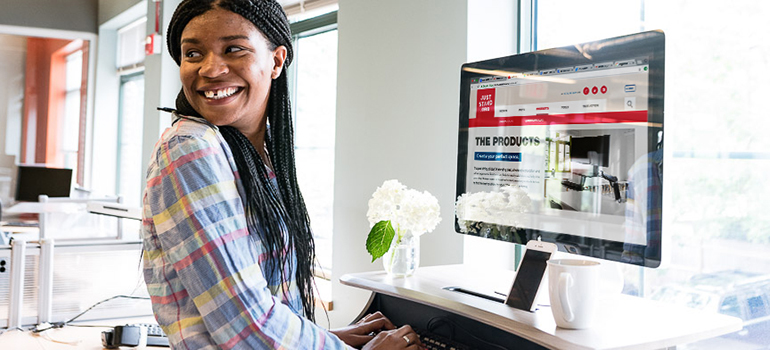
MoveMore Blog
The latest in workplace wellness

Use Balanced Office Design to Move Your Organization—and People—Ahead
It’s official: providing balanced space is the key to making your office design most effective. New research supports our belief that working people need a mix of open and individual space to promote both collaboration and personal productivity. They also need movement to thrive.
The surge in brighter, open-concept office design in recent years is understandable. It encourages accidental bump-ins, impromptu conversations and frequent collaboration, all of which promote creativity and innovation. And a study exploring the effects of office workstation type on physical activity and stress found that workers in open work environments were more active and experienced lower perceived stress at work as compared to workers in traditional cubicles.
That’s all good news for open-design advocates, but it’s not the whole story.
Specifically, recent research has found that personal perception of productivity is most strongly associated with the ability of a space to support individual, not collaborative, work. Noise is another common complaint associated with open-concept designs, most notably the negative effect of noise on concentration.
What should you consider when choosing an office layout? As with most things, the best solution usually is based on compromise. In other words, focusing too narrowly on an open- versus closed-concept design might miss the bigger picture: different types of workspaces are important and movement truly matters.
We recommend creating different spaces to promote wellness, encourage productivity and allow creativity to flourish. For instance, providing dedicated workspaces that allow movement—such as integrating WorkFit™ Sit-Stand Workstations—can improve productivity by increasing physical activity and reducing stress.
Today’s workplaces must address organizational goals while simultaneously benefitting the health and well being of employees. Resources exist to make this easier. Standards like the WELL Building Standard help companies make research-driven design choices that positively impact employees. Not surprisingly, this approach helps companies achieve other strategic initiatives.
The bottom line?
Don’t be binary! Instead of thinking about open concept versus cubicles, consider what goes into and around workspaces, like sit-stand workstations and ergonomic monitor arms, access to natural lighting and clean air, and even live plants. Creating an environment that has a positive impact on employee health will transcend trends in workplace design, while encouraging people to work at their highest potential.
Relevant Posts
Stay in the know
Sign up and get the latest and greatest content from JustStand's MoveMore blog.